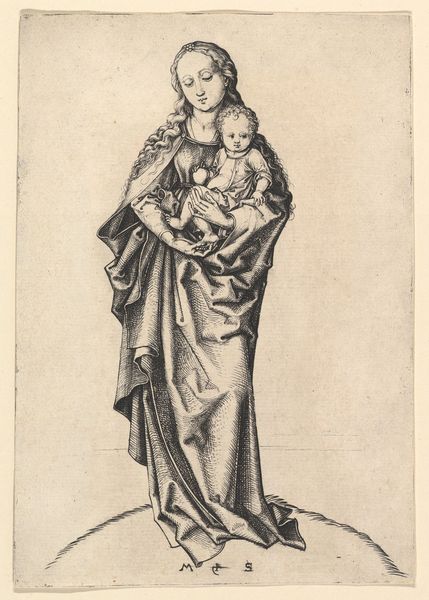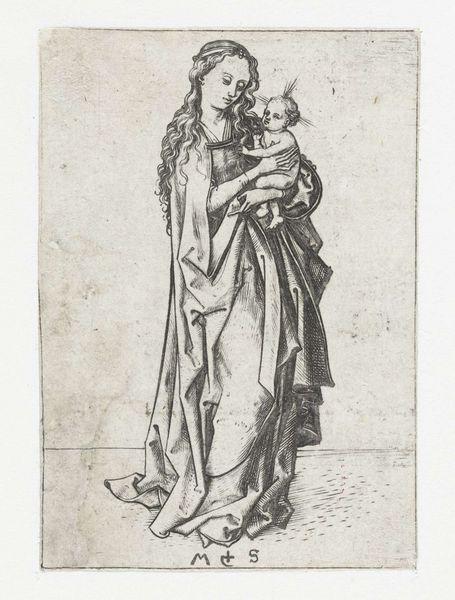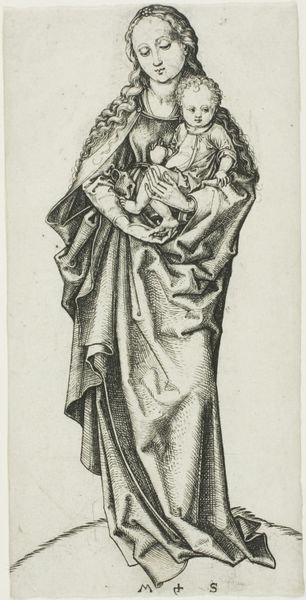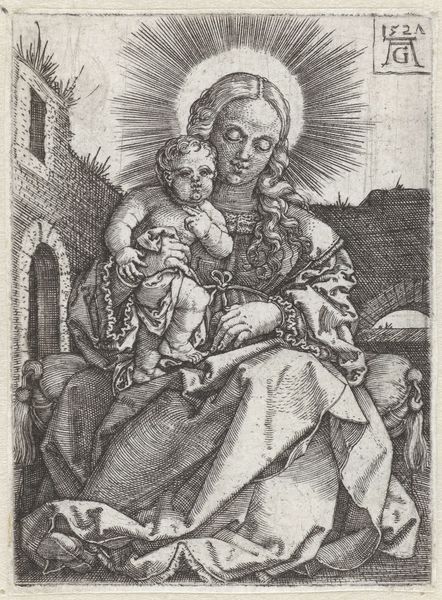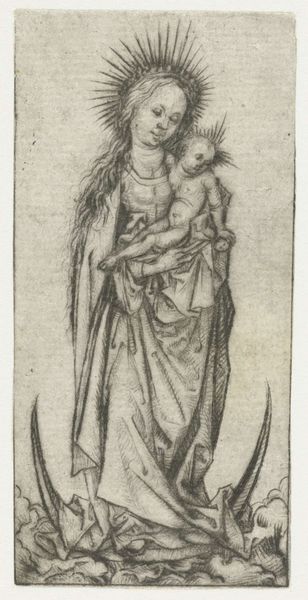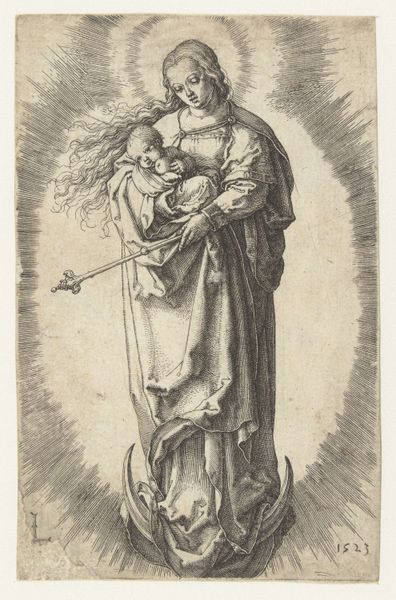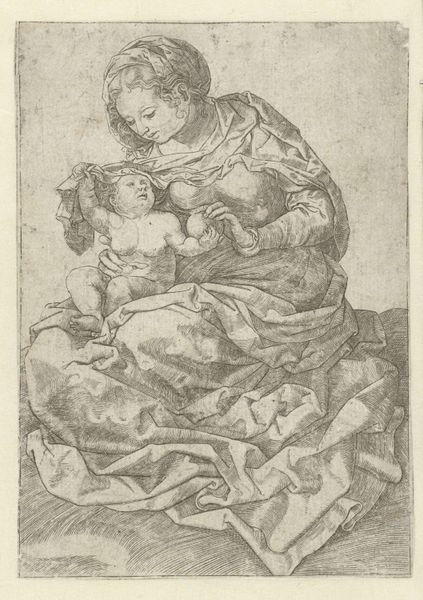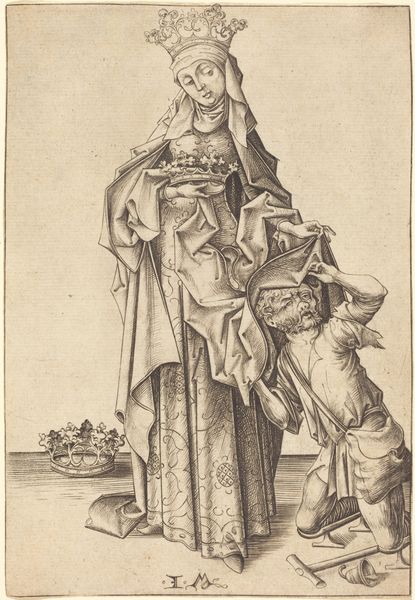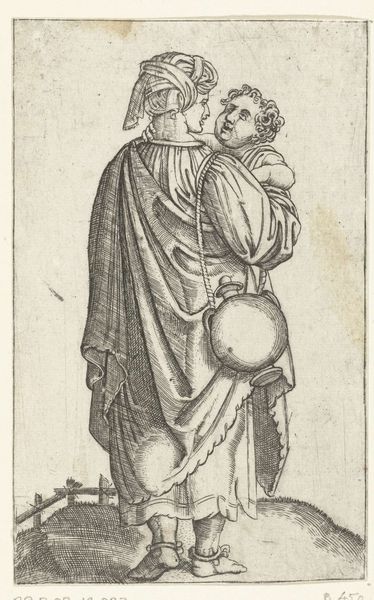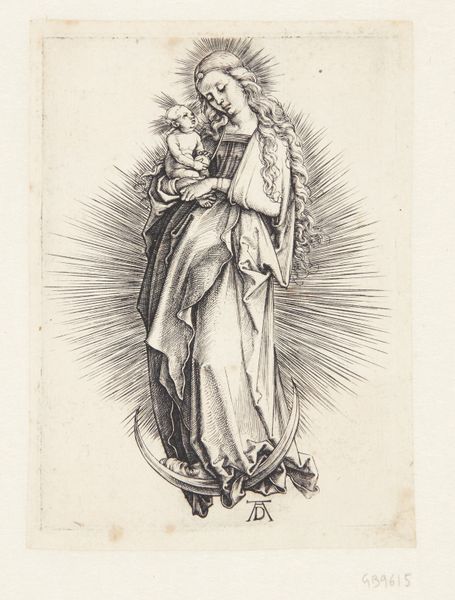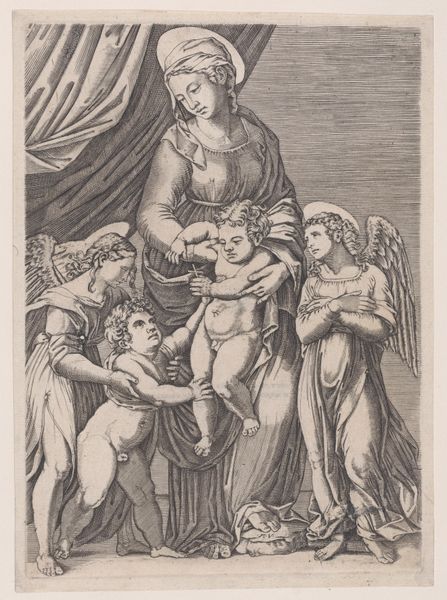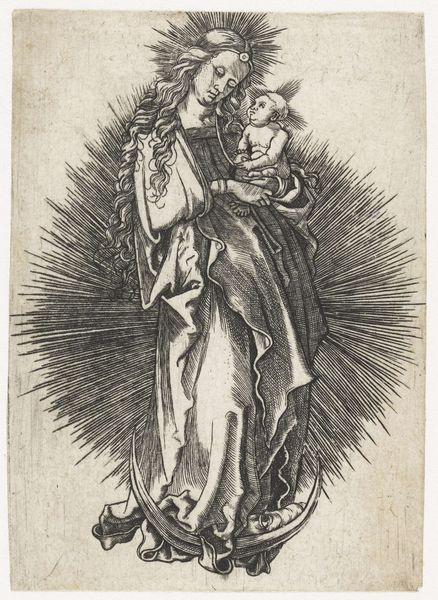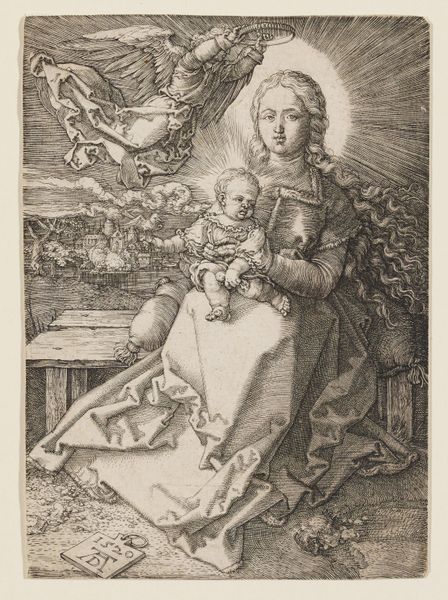
drawing, print, engraving
#
portrait
#
drawing
# print
#
figuration
#
child
#
northern-renaissance
#
engraving
Dimensions: Sheet: 6 13/16 x 4 5/8 in. (17.3 x 11.7 cm)
Copyright: Public Domain
Curator: The textures are so meticulously rendered, aren't they? There's almost a tactile quality to this engraving. Editor: Indeed. Martin Schongauer’s "Virgin and Child with an Apple," made between 1470 and 1475, really showcases the precision he’s known for. You can find it here in the Met. Curator: Immediately, the somber tone strikes me. Even the light seems constrained. Considering its purpose, one expects to see joyful, rather uplifting affect. This version however exudes thoughtfulness, maybe even sorrow, when observing it. What does this say about what it meant to portray the Virgin Mary in art and how this relates to women at the time? Editor: Well, consider the apple. While it can represent salvation in the Christ Child, it also deeply relates to original sin, to Eve's transgression and its heavy legacy cast on the gender. Perhaps that accounts for some of the gravity we're picking up on. The virgin embodies this, but is free from sin and, at the same time, still a woman facing its realities. Curator: Exactly, this really highlights the ambivalence around femininity and female agency within the Catholic dogma of the period. She holds power as a symbol and as mother of Christ, yet this same association ties her to a legacy of moral fallibility through the apple itself, echoing pre-existing cultural myths that degrade and blame women. It places them between being revered and mistrusted, between the ideal of moral purity and the dangers of embodied desire. Editor: Absolutely. Also the northern Renaissance, with its rising merchant class and increased individual piety, moved toward a more emotional and intimate relationship with religious figures. These themes speak to a deep desire to feel understood in the struggles, in the very fabric of life. Curator: What about Mary, who represents something that can feel distant from lived experience—unattainable? But with the choice of an ordinary looking child as the Christ, that’s a message that we must also interpret for our times, since images like this normalize, without accounting for women from many classes, races, ethnicities and gender orientations? What is its effect on today’s audience and on its legacy when seen by people from other faiths? Editor: Schongauer's engraving, therefore, transcends the purely devotional. It's an intricate window into how societal anxieties around salvation and gender shaped the spiritual and visual culture of its time—as much as our own. Curator: A potent reminder that images never exist in a vacuum. Their meanings are constantly in dialogue with the world around them. Editor: And how we engage with art is just as much a reflection of us as it is of its creators.
Comments
No comments
Be the first to comment and join the conversation on the ultimate creative platform.
